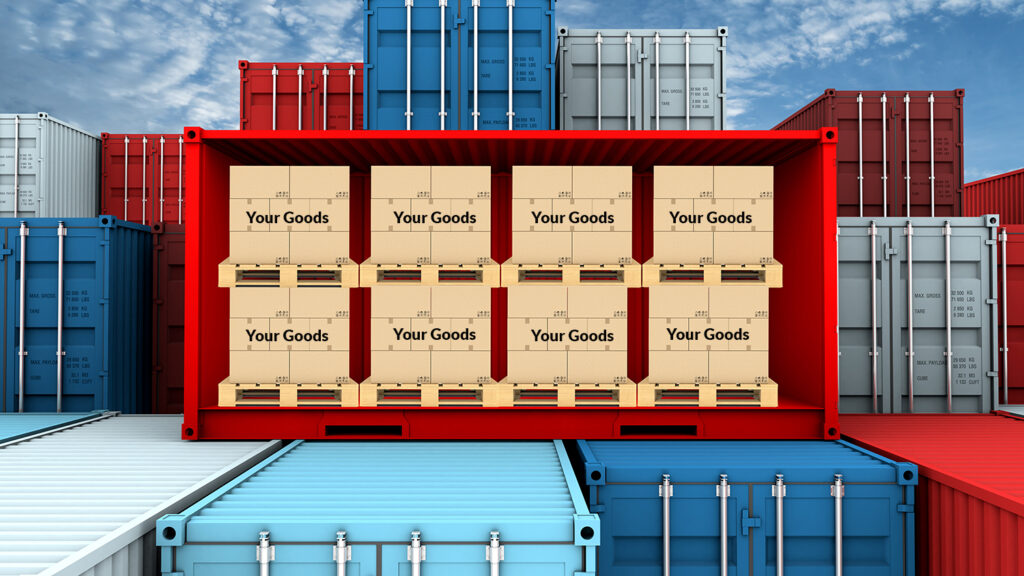- By TOP CHINA FREIGHT
- September 5, 2025
- Shipping
Table of Contents
Managing international freight requires careful planning, and FCL rates from China are one of the most important factors for importers. With rising demand and fluctuating global supply chain costs, knowing how full container load pricing works can help businesses make smarter shipping decisions. In this guide, we explore FCL costs, transit times, customs requirements, and practical strategies to save money.

What does FCL mean in shipping terms?
FCL, or Full Container Load, refers to booking an entire container for one consignee. Unlike LCL (Less than Container Load), FCL shipments provide exclusive use of a container, reducing handling and potential damage.
| Container Type | Capacity | Best For | Advantage |
|---|---|---|---|
| 20ft | 28–30 CBM | Small to medium cargo | Lower cost |
| 40ft | 58–60 CBM | Large volume | Cheaper per CBM |
| 40ft High Cube | 68 CBM | Oversized cargo | Extra space |
For businesses importing in bulk, FCL ensures predictable shipping costs from China and fewer delays during customs clearance.
How much do FCL rates from China cost?

The cost of FCL depends on container size, route, and market conditions. On average:
| Container Size | Average Rate | Transit Time |
|---|---|---|
| 20ft FCL | $2,000–$3,200 | 25–35 days |
| 40ft FCL | $4,000–$5,500 | 25–35 days |
| 40ft High Cube | $4,200–$5,800 | 25–35 days |
Rates also vary depending on the shipping line, seasonal demand, and port of discharge. For example, sending a container to Durban in South Africa may differ from shipping to Rotterdam or Los Angeles.
What factors influence FCL rates from China?
Several factors drive container pricing:
- Fuel surcharges and bunker adjustment factors
- Port handling and terminal fees
- Global container availability
- Customs duties and import taxes
- Seasonal demand, such as Chinese New Year
Therefore, businesses must account for both freight rates and hidden charges to estimate the true cost of FCL shipping from China.
How long does FCL shipping from China take?
Transit times vary by destination:
| Route | Average Transit Time |
|---|---|
| China – USA (West Coast) | 18–25 days |
| China – USA (East Coast) | 28–35 days |
| China – Europe | 25–32 days |
| China – Africa | 25–35 days |
| China – Australia | 15–22 days |
However, delays may occur due to port congestion, customs inspections, or weather conditions. Importers should plan shipments well in advance.
Why choose FCL over LCL?

While LCL may seem cheaper for small shipments, FCL often becomes more economical for loads above 15 CBM.
| Method | Pros | Cons |
|---|---|---|
| FCL | Lower per-unit cost, secure, fewer delays | Higher upfront cost |
| LCL | Flexible, cost-sharing for small loads | Slower, more handling |
Moreover, FCL rates from China give importers control over container loading and reduced risk of damage.
What customs documents are needed for FCL imports?
Contract of carriage
Declares shipment value
Identifies goods
Confirms country of manufacture
Required for restricted items
Legal clearance
Case Study: Furniture shipping from Ningbo to Los Angeles
A US retailer imported two 40ft containers of furniture from Ningbo to Los Angeles.
FCL option:
$4,800 per container, transit 26 days
LCL option:
$120 per CBM, total $6,200, transit 35 days
By choosing FCL, the importer saved nearly $1,400 per shipment and reduced handling risks. This shows how FCL rates from China are often more cost-effective for larger orders.
How to reduce FCL shipping costs from China?
Businesses can apply these strategies to cut expenses:
- Book in advance to lock in lower rates.
- Negotiate Incoterms like FOB to control freight costs.
- Use alternative ports to avoid congestion surcharges.
- Work with experienced freight forwarders for discounts.
- Consolidate supplier orders to fill one container instead of multiple LCL shipments.
What are the pros and cons of FCL shipping?
| Pros | Cons |
|---|---|
| Lower per CBM cost | Requires high volume |
| Reduced risk of damage | Upfront cost higher |
| Faster customs clearance | Limited flexibility for small loads |
| Better control over logistics | Seasonal rate fluctuations |
Conclusion
For importers moving large quantities, FCL rates from China provide cost efficiency, faster customs clearance, and reduced handling risks. While initial costs may be higher than LCL, the long-term savings and reliability make FCL the preferred option for many businesses. Choosing the right freight forwarder, booking early, and planning around seasonal peaks ensures better cost control.
Need a Shipping Quote?
If you want expert guidance and peace of mind, our team is ready to assist.
TJ China Freight offers tailored solutions to help businesses of all sizes ship more reliably from China.

FAQs
Q1:How can small businesses benefit from shared FCL services?
Small companies can split container space through groupage, reducing overall FCL shipping costs from China while still enjoying reliable transit times.
Q2:Are there seasonal discounts on FCL rates from China?
Yes, booking outside peak seasons like Chinese New Year often ensures cheaper full container load shipping from China.
Q3:What is the best port in China for lower FCL rates?
Ports like Qingdao and Ningbo sometimes offer more competitive FCL freight rates from China compared to Shanghai, depending on destination.
Q4:Can digital freight platforms help reduce container costs?
Absolutely, online platforms allow importers to compare quotes quickly, making FCL rates from China more transparent and competitive.
Q5:Do FCL rates change with Incoterms?
Yes, Incoterms like FOB or CIF directly impact China FCL shipping costs, as responsibilities for freight and insurance differ.
